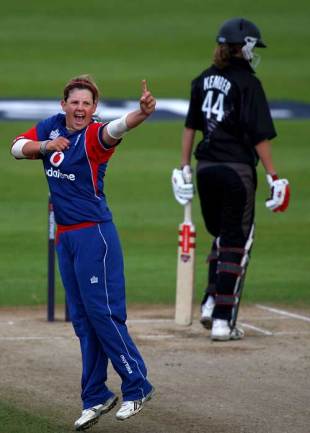A three-way battle to stand on top of the world

| ||
Australia may have home advantage for the 2009 World Cup and the statistical benefit of being unbeaten in a one-day series since 2000, but as the world at large has been learning, numbers can mask a truer picture. They had to come from 2-0 down in their series with a strong New Zealand in February, while England have emerged as a force and held them to a draw in their backyard last year.
Being uncertain as to who will be the winner this time indicates a time of strength for the women's game. Australia, New Zealand and England are the three main contenders and have sides brimming with talent, desire and ability. They are the only teams to have won the tournament since its inception in 1973.
It would be foolish to write off India, the fourth main contender, and the beaten finalist in 2005. However, they have been on the wrong side against the three big players, with a 12-match losing streak stretching back to 2007.
This is where another number clouds the truth. India head into the tournament ranked at No. 2, based on their final appearance four years ago. Since then they have won eight and lost 35 against the top three. A more realistic billing on current form would be a distant fourth.
Australia are rightly No. 1 for their consistent record, and it is hard to split England and New Zealand for the No. 2 spot. What of the other contenders? Sri Lanka are only in their 12th year, but have already won more of their 70 games than they have lost, albeit against the lesser teams.
West Indies surprisingly took the final qualifying place last time ahead of the hosts South Africa. Since then they have hardly played international cricket, meaning that during last year's European tour the majority were debutantes. Their raw talents had a steep learning curve - and were boosted by further experience in Sri Lanka - and will head into the World Cup with some confidence and nothing to lose.
South Africa usually present a decent challenge, and have beaten some of the top teams already this decade, while the fellow qualifier Pakistan have managed only two wins from their past 23 matches. It's hardly inspiring.
Though many teams have not faced each other this millennium, video recordings of the warm-ups should assist with last-minute analysis. Not that any upsets are really expected.
As for the format, for the first time in World Cups there is a Super Sixes stage. The two groups of four will compete to move into the last six, with points from the group games carrying over. It means fewer matches of lower quality, with the bottom two sides knocked out quickly.
New South Wales won the right to host the tournament, although some group-stage games will be played in Canberra, which sits in the Australian Capital Territory. All of the matches at North Sydney Oval will be televised globally, giving the largest exposure for the women's game. They have put the most attractive fixtures up for showcasing, with only one contest there not featuring a top-four team.
Though North Sydney Oval is only the second non-Test ground to host a women's World Cup final the choice is sound. The ground offers intimacy and grassy banks and its smaller capacity should allow for better pictures of the crowds, rather than swathes of empty seats.
While we can't be sure how many will turn up, and we can't hope to know the eventual winner, one thing is for certain: this World Cup has the potential to be the most exciting yet. The batsmen are hitting harder than ever before, the fielding is generally of high quality and the mark for winning totals gets higher and higher. There is plenty of anticipation surrounding the most important tournament of all for the women's game.
Jenny Roesler is a former assistant editor at Cricinfo
